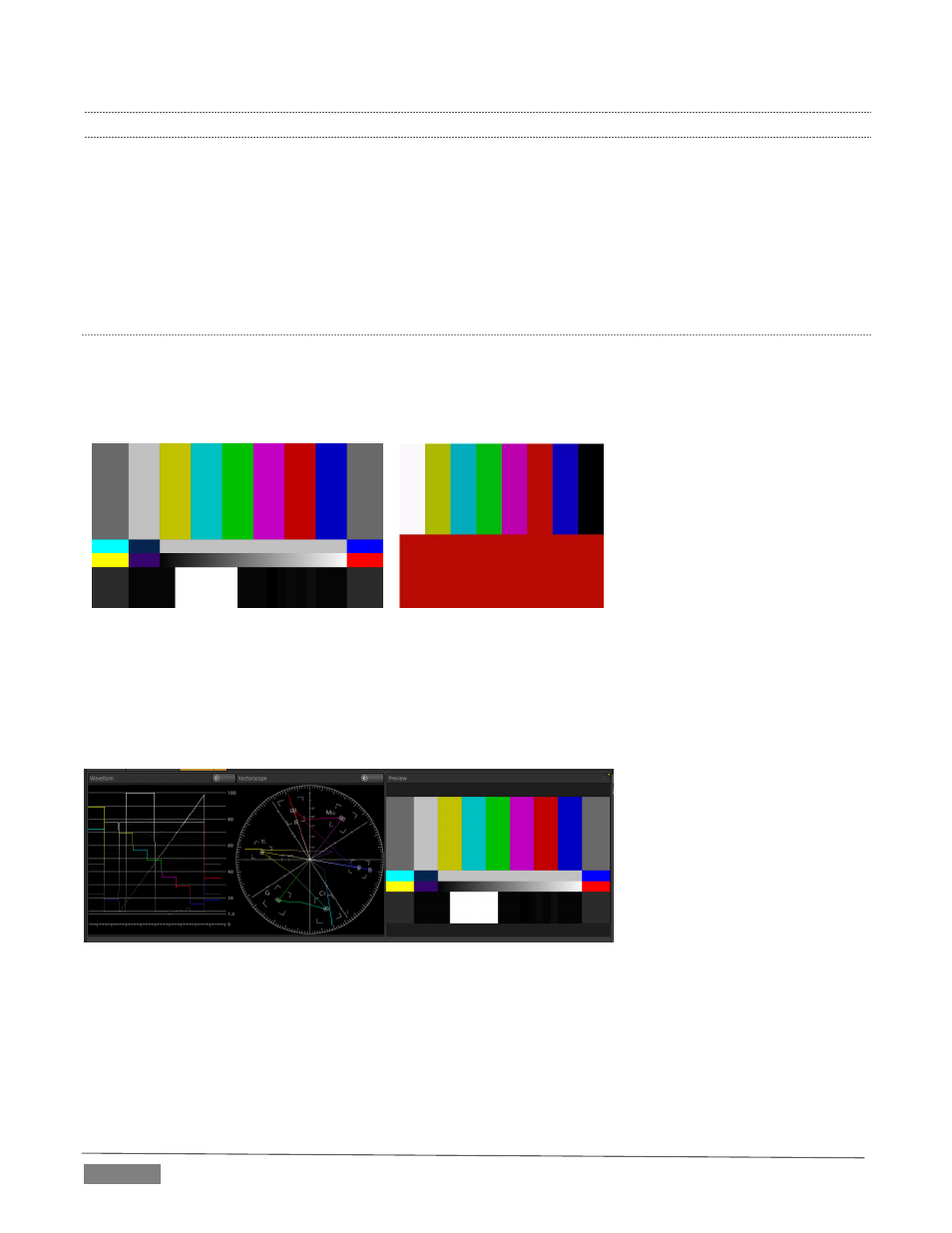C.2.3, Color metrics – NewTek TriCaster Advanced Edition User Guide User Manual
Page 320

Page | 308
C.2.3 COLOR METRICS
At this point, we’ve assured ourselves that the signal from the camera is neither too bright nor too dark, that
its output falls within broadcast legal luminance limits, and that the black & white part of the signal does not
have an unwanted color cast.
We haven’t done anything yet, though, to assure our reds are red, not slightly brown, or that our blues are
not slightly green or magenta, etc. The Vectorscope can provide much more specific information about your
cameras color signal. Let’s see how it can assist you to ensure your colors are accurate.
U
SING
C
OLOR
B
ARS
You’ll no doubt have seen the familiar color bars used as a standard reference for video signal calibration.
Two examples are shown here. Figure 336 is an example of the color bars used in NTSC countries, while
Figure 337 is a PAL example, common throughout European nations.
FIGURE 336 (NTSC)
FIGURE 337 (PAL)
You can use color bars in conjunction with TriCaster’s Waveform and Vectorscope to make sure the video
supplied to the Switcher is consistent, accurate and broadcast legal.
Most video cameras are capable of displaying color bars – check your camera manual to see how to display
these (given a choice, use 75% bars). Then look at the Vectorscope to see how it traces the individual colors
comprising the image.
FIGURE 338
The Vectorscope graticule has six distinct rectangular targets, one each for Yellow, Red, Magenta, Cyan, Blue,
and Green. The targets are small rectangles with a cross-hair superimposed on them.
When a source is properly calibrated, the trace from the different colored segments of the color bars
displayed will fall right inside their individual targets (see Figure 339).
